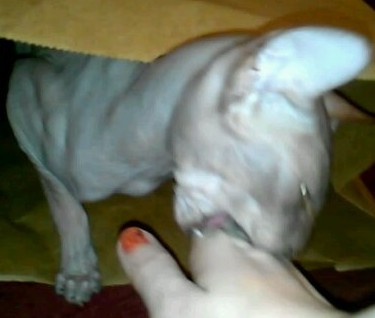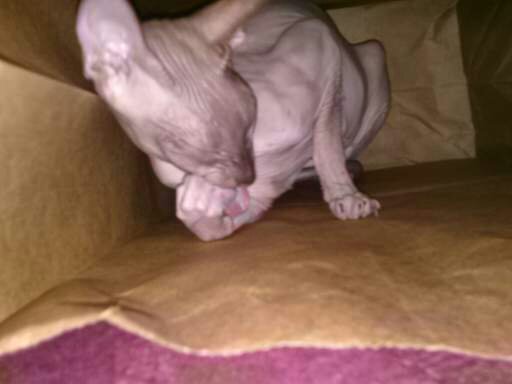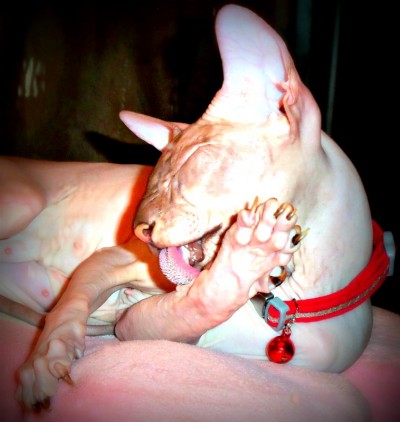Sphynx Care – Nails and Teeth
Nails
Nails of sphynx are same as other cats’ so you will have to clip them every 2-3 weeks. I recommend sharp, always disinfected clippers to prevent crushing of the nail. And like with all cats you have to cut about 2 mm from the quick. Start to trim nails regularly in young kittens so they get used to procedure. Use trimmers which are most comfortable for you. It’s a good idea to own scratching post or two to give your sphynx chance to sharpen claws and satisfy their natural instinct of scratching. Sphynx have dark brown, sometimes almost black residue around their nail’s beds. It is a normal product of sweat glands situated between toes. In “hairy” cats you can’t see it, because it hides under their hair. Sphynx have no hair so it’s visible to naked eye. Sphynx are cleaning their nails daily. If you wish to remove some of gunky sweat ( it’s get darker when meets with oxygen) you make use watered q-tip swabs and gently clean around each nail after bath or trimming. Use new q-tip for each nail.When you trim nails don’t forget about dewclaw.
I vote strongly against declawing, it involves the amputation of the last bone of each toe and leaves pet scarred physically and mentally for life! If you consider that option you should not be the pet owner ever.
Teeth
Sphynx like all the cats need daily oral hygiene. There are plenty of products on the market. I recommend to use whatever works for you, since you need to do it regularly. Just make sure you don’t use products for humans, they are dangerous for cats. Remember to clean all teeth, not only front ones. Sphynx teeth are smaller than other cats. So be careful when you feed them. Use right size dry kibble (remember cat’s teeth weren’t design to grind) and check for bones before you feed your pet with fish (even from famous and popular brands). If you started new food let your sphynx to try when you are watching. Some dry products are simply too big and or hard for sphynx to either chew them or swallow. Also avoid food or treats with sugars in them as they are causing teeth problems same way do for humans.
Important to remember that sphynx are prone to hypothermia and hypoglycemia. So talk to your veterinarian about best method of anesthesiology during teeth cleaning procedure (during spaying or neutering also).
I hope you will remember to keep well-balanced, nutritious diet. Keep water and some food available at all times. Sphynx need more calories than hairy felines so having snack sized food can become handy. Sphynx feel when they need extra calories to bring their sugar levels higher or due to sudden drop in the temperature. Their metabolism is higher than other pets so don’t feed them just twice a day. They need food at least 4-6 times in 24 hours.


